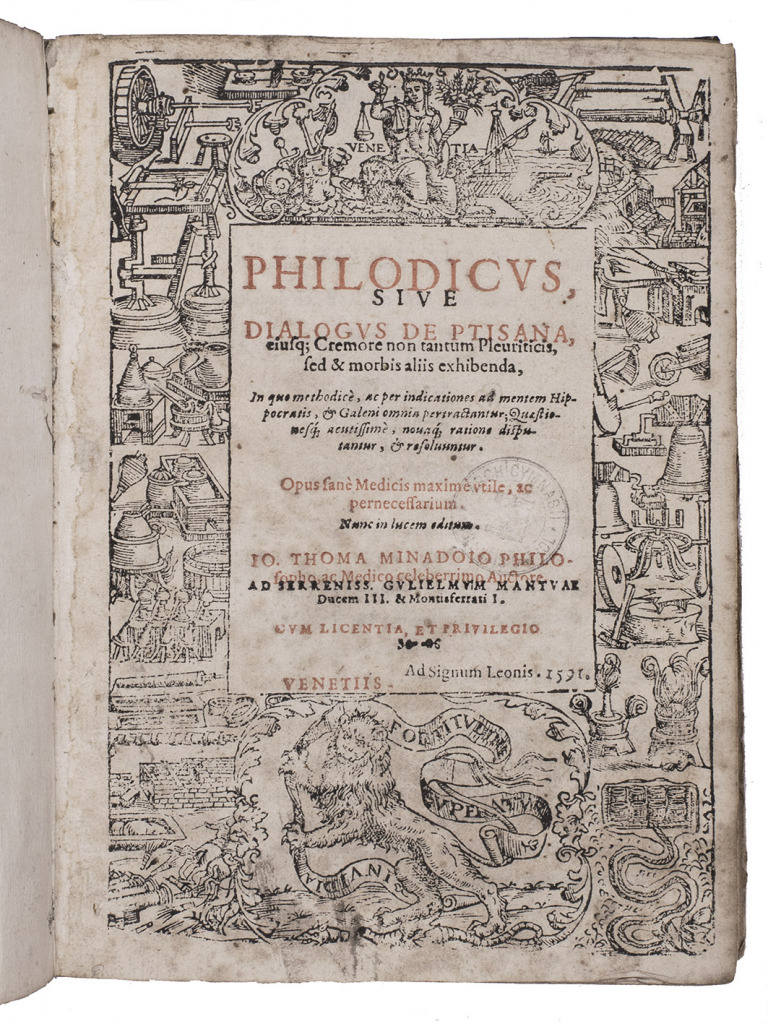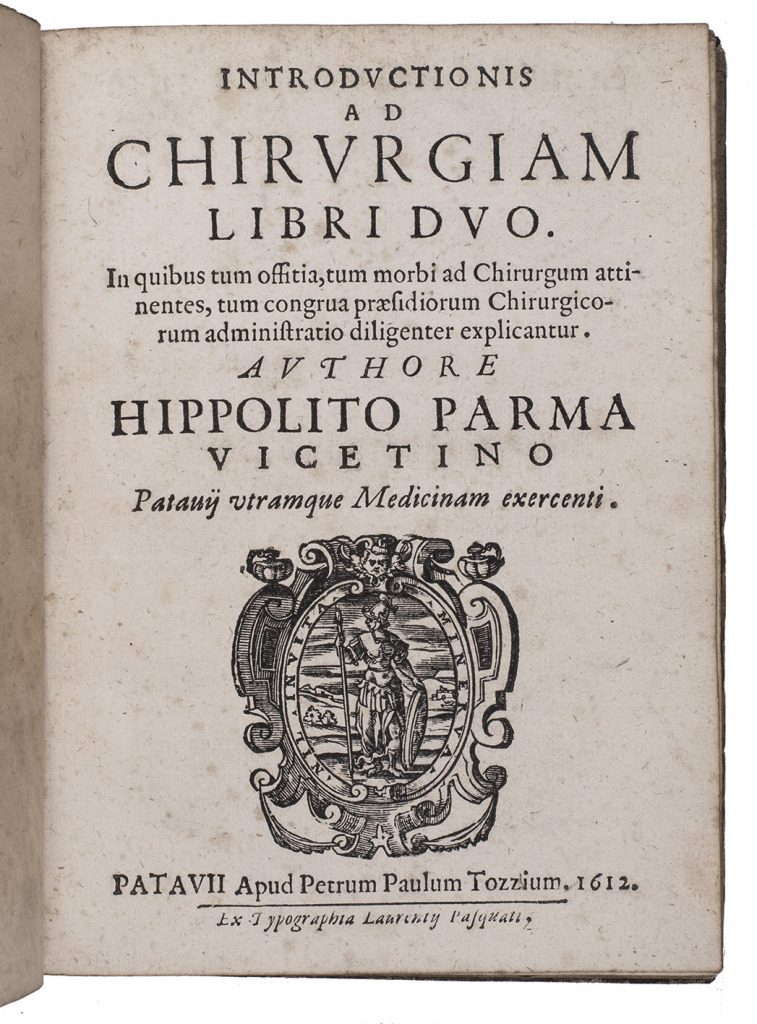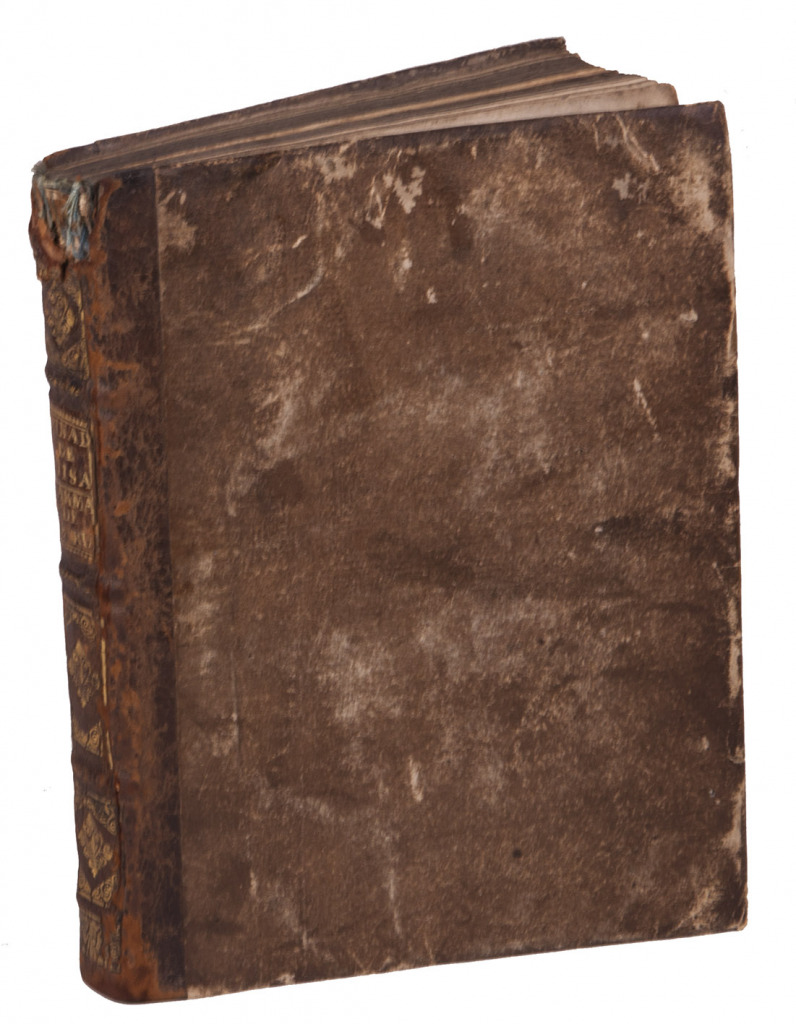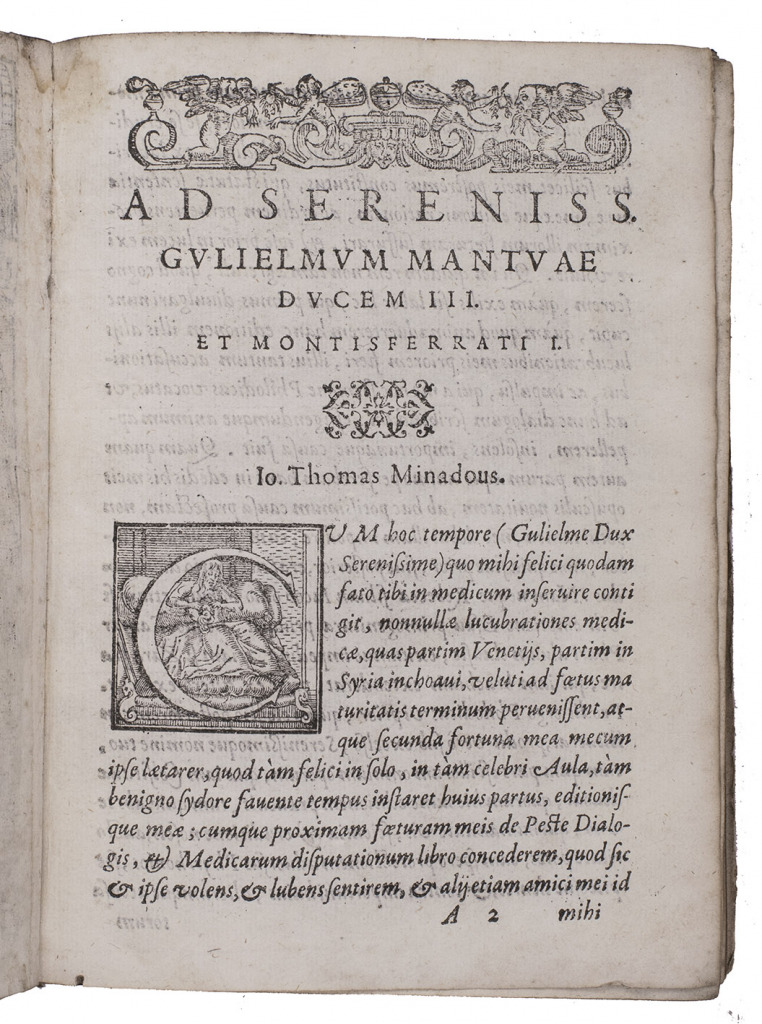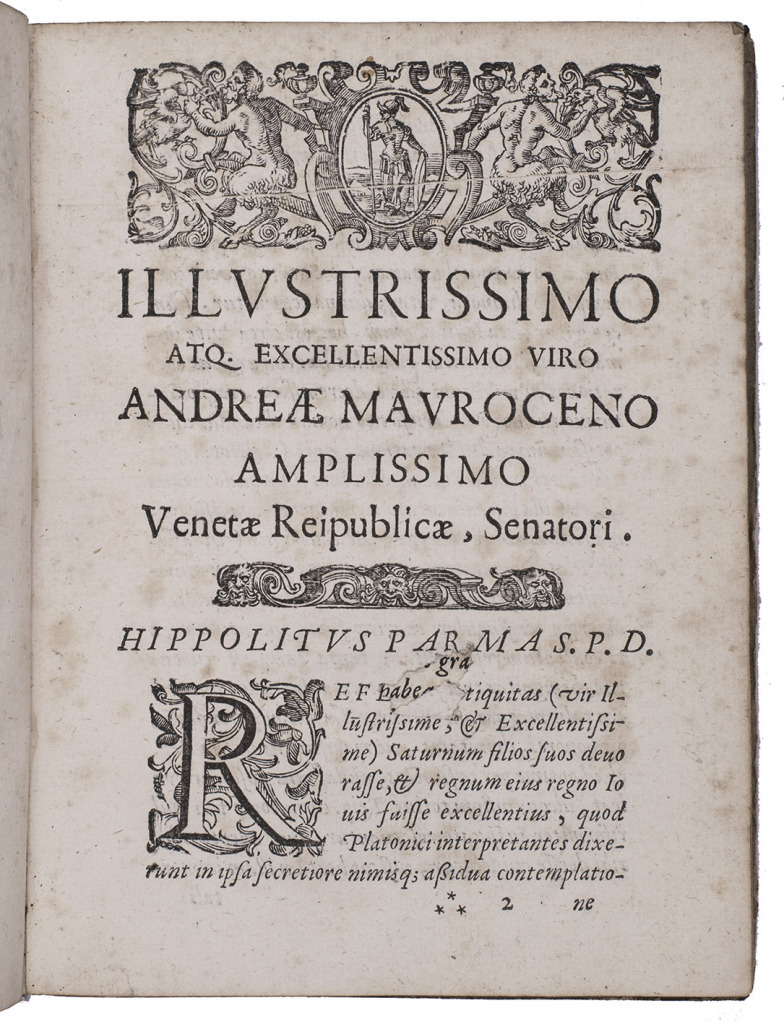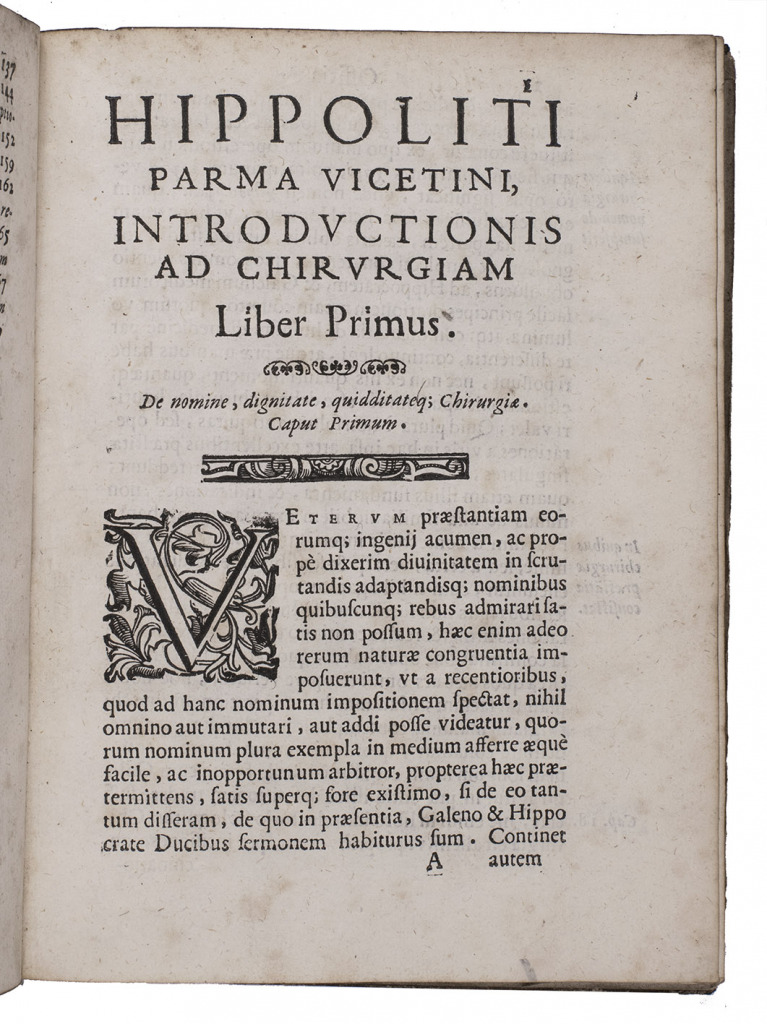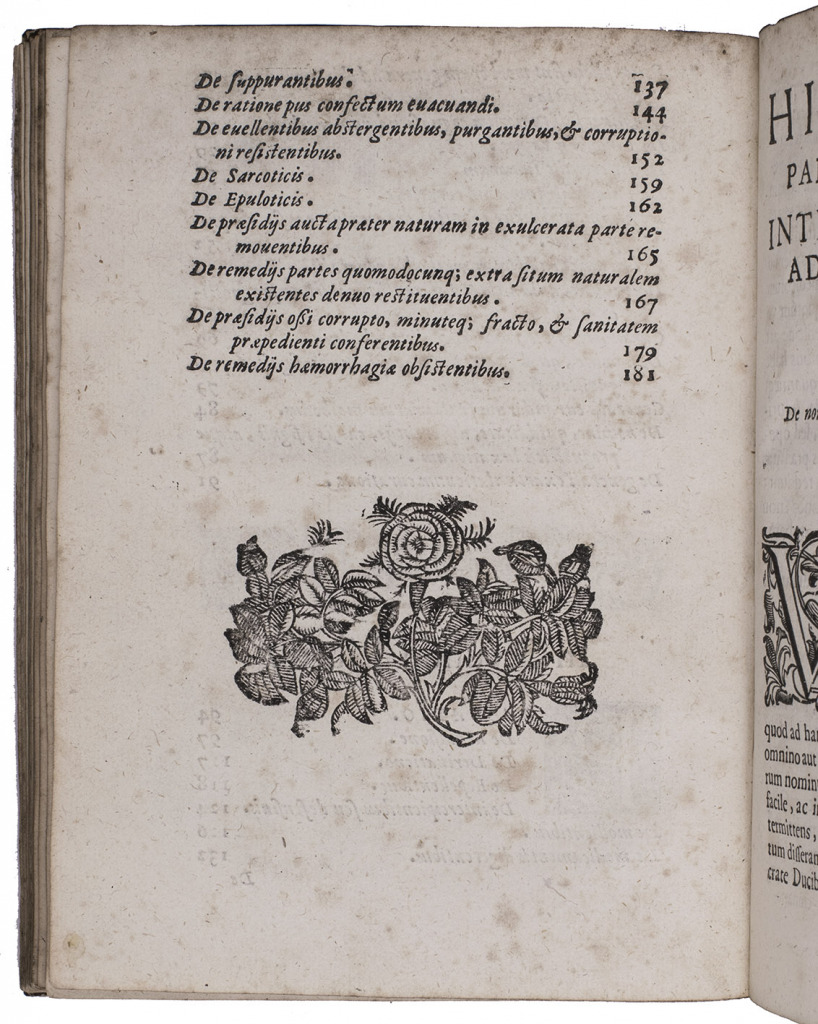MINADOI, Giovanni Tommaso.
Philodicus, sive Dialogus de ptisana, ...
Venice, "ad signum Leonis" [= heirs of Curzio Troiano Navò], 1591 [all but the prelims printed by Francesco Osanna, Mantua, 1584]. With title-page in an illustrated woodcut border (showing equipment for distilling, forging and other trades plus in a cartouche at the foot Navò's rampant lion device).
With: (2) PARMA, Ippolito. Introductionis ad chirurgiam libri duo. ...
Padova, Pietro Paolo Tozzi (printed by Lorenzo Pasquato), 1612. With Tozzi's(?) woodcut Minerva device on the title-page. 2 works in 1 volume. 4to. Half calf (French, ca. 1750), gold-tooled spine. [8], 124, [2 blank]; [8], 196 pp.
€ 12,500
First edition, second issue, of a dialogue set in Aleppo on the use of barley infusions (often together with other medicines) for the treatment of various illnesses and ailments, written by the personal physician of the Venetian counsul to Syria and later professor of practical medicine at the University of Padova and published during his brief return to Italy between two long stays in Aleppo. The dialogue is set at the bedside of a Venetian merchant in Aleppo who is suffering from pleurisy. Philodicus and Phioliatrus debate the proper treatment, particularly whether to administer a barley infusion before or after purging. Minadoi proposes that they continue the discussion at his house, where they can consult his extensive library. Philodicus follows the humanist Giovanni Manardo while the more conservative Philiatrus and Minadoi follow Galen. They support their arguments by citing numerous Greek, Latin and Arabic sources, including Hippocrates and Ibn Zuhr (1094-1162), known in Europe as Avenzoar.
Minadoi (1549?-1615), born and raised in Ferrara and Rovigo, took his degree in medicine at Padova in 1576 and went to Aleppo in 1578 as personal physician to the Venetian consul to Syria. He spent much of the next eight years there, also visiting Constantinople and Jerusalem. His experience practicing medicine in the Middle East and his contacts with the Islamic world there certainly contributed to his skill as a physician.
It is bound with the first and only edition of the last and most important publication by the Padova surgeon Ippolite Parma, a practical course on surgery with a general introduction followed by treatises on tumors, surgery, broken bones, dislocations and a more general treatise on the subjects. Although Parma had published Praxis chirurgica in 1608, the present book is an entirely new work.
With the engraved bookplates of the Paris surgeon Sauveur François Morand (1697-1773) and that of Hyacinthe Théodore Baron (1707-1787), professor of medicine at the Hôtel-Dieu in Paris from 1750-1753 and in charge of the army medical corp., library stamps of the Archepiscopal Gymnasium in Lille; and a donation inscription, dated 1881, from Alfred Dujardin to François Guermonprez (1849-1932), both medical doctors in Lille.
With the last printed leaf (with the errata and 1584 colophon) cancelled. With some minor browning, and occasional minor foxing or spotting. In the first quire of the Minadoi, the title-page has been re-attached and there are some small stains and restorations. There is a hole in the first page of the Parma's dedication. In spite of these minor defects, most leaves of both works are in good condition. The binding is shabby, but most of the tooling on the spine is still clear. Ad 1: Durling 3171; Antoine Pietrobelli, "Polémiques sur la ptisane d'Hippocrate à Minadoi", in: Medicina nei secoli XXIX (2017), pp. 1077-1118, at pp. 1104-1106; USTC 842793; ad 2: BMC STC Italian (17th cen.), p. 659; USTC 4023497.
Related Subjects:
